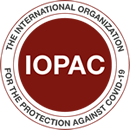<p>WHO welcomes the recent decision by the U.S. Food and Drug Administration (FDA) to approve a dispersible 5 mg formulation of dolutegravir (DTG) for use in infants and children living with human immunodeficiency virus type 1 (HIV-1). The tablet, taken
orally, has been approved for use in paediatric patients from four weeks of age weighing at least 3 kg in combination with other antiretroviral treatments. </p><p>This approval was supported by a trial that included 75 infants and children infected with HIV-1 with an average age of 27 months. According to the <a href="https://www.fda.gov/news-events/press-announcements/fda-approves-drug-treat-infants-and-children-hiv" target="_blank">FDA press release</a>, 62% of pediatric patients taking the 5 mg formulation had an undetectable HIV viral load at 24 weeks and, at 48 weeks, 69% had an undetectable viral load. On average, the patients had
higher levels of CD4 cells that help the body fight off infection.</p><p>The FDA has also extended the use of the already approved DTG 50 mg film-coated tablet to include paediatric HIV patients weighing 20 kg and above. Previously, the 50 mg tablet was only approved in the US for children from six years of age with a weight
of more than 30 kg.</p><p>Submission of the dispersible 5 mg formulation of dolutegravir to the European Medicines Agency took place in December 2019 and is under evaluation, with a decision expected by the end of the year. Two generic versions of the paediatric DTG 10 mg dispersible
scored tablet are currently under review by the U.S. FDA, and a decision on these formulations is anticipated by the end of the year. These generic versions will expand access to paediatric dolutegravir and help to reduce pill burden while maintaining
dosage flexibility to deliver FDA approved dose.</p><p>In 2018, WHO published up-to-date <a href="https://www.who.int/hiv/pub/guidelines/ARV2018update/en/" target="_blank">recommendations for the use of antiretroviral (ARV) drug regimens to treat and prevent HIV infection</a>. These
guidelines recommended a dolutegravir-based regimen as the preferred first-line and second-line regimen for children for whom approved DTG dosing is available. To date, implementation of WHO guidance has only been possible for children weighing at
least 20 kg, for whom 50 mg adult tablets could be used based on <a href="https://www.who.int/hiv/pub/guidelines/ARV_Guidelines-2018-Annex3a.pdf?ua=1" target="_blank">WHO dosing recommendations</a>. </p><p>This FDA approval marks a significant step in making available optimized, paediatric formulations of dolutegravir for children, allowing full implementation of WHO’s most recent recommendations. Many countries have already adopted the latest WHO
guidelines on DTG for all children. WHO encourages all remaining countries to do so and to develop plans for a rapid introduction of paediatric DTG (see policy brief on <a href="https://www.who.int/hiv/pub/paediatric/aids-free-toolkit/en/" target="_blank">Considerations for introducing new antiretroviral drugs formulations for children</a>).</p><p>”Children are among the most vulnerable and disproportionately affected populations in the HIV epidemic. The lack of optimal antiretroviral medicines with suitable paediatric formulations has been a longstanding barrier to improving health outcomes
for children living with HIV, contributing towards low treatment coverage, and poor virological suppression”, said Dr Meg Doherty, Director of Global HIV, Hepatitis and STI Programmes. “This approval will greatly expand the use of dolutegravir
among children and adolescents, providing them relatively rapid access to an optimal drug that has so far – like many paediatric ARVs – only been available to adults.,” she added. </p><p>As the majority of AIDS-related deaths among children occur during the first five years of life, the availability of an optimal ARV formulation for children above 3kg and 4 weeks of age is a significant milestone with the potential to save many lives.
The expedited development and introduction of optimal paediatric formulations is the central goal of global partnerships such as the WHO-led <a href="http://gap-f.org/" target="_blank">Global Accelerator for Paediatric Formulations (GAP-f).</a></p><p>Globally, an estimated 770 000 people died from HIV-related causes in 2018 and there were 1.7 million new infections. Children under the age of five represented approximately 14% of the total deaths due to HIV infection. </p>
